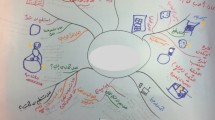Abstract
Literacy is the foundation of education and supporting young children’s early literacy opportunities prepares them for a variety of learning experiences, both in traditional and non-traditional settings. Reading to shelter dogs in non-traditional settings may offer a space that is judgement-free and inviting for the development of motivation and confidence. This case study examines the experiences and perceptions of those involved in a Reading with the Dogs program at an animal shelter in Southwest Florida. Multiple sources of data were collected, including video observations, field notes, and individual and focus group interviews. The direct observations occurred monthly during the Reading with the Dogs sessions and these allowed for the researchers to interact with the children and families in a more informal setting, building rapport with them. The data analysis resulted in the identification of three themes: (1) more confident, motivated readers, (2) supporting social and emotional development, and (3) removing the stigma. Overall, the themes indicated that the Reading with the Dogs program provided a variety of benefits for the children and families involved, in addition to providing benefits for the dogs and the shelter. Programs such as the one explored in this study may be expanded or replicated in other shelters or in more traditional educational settings.





Similar content being viewed by others
Data Availability
IRB Protocol ID# 2021-17.
Code Availability
N/A.
References
Anderson, K. L., & Olson, M. R. (2006). The value of a dog in a classroom of children with severe emotional disorders. Anthrozoös, 19(1), 35–49. https://doi.org/10.2752/089279306785593919
Alliance of Therapy Dogs (2021, September 27). Difference between a therapy dog vs a service Dog. Alliance of Therapy Dogs Inc.
Braun, V., & Clarke, V. (2006). Using thematic analysis in psychology. Qualitative Research in Psychology, 3(2), 77–101. https://doi.org/10.1191/1478088706qp063oa
Connell, C. G., Tepper, D. L., Landry, O., & Bennett, P. C. (2019). Dogs in schools: The impact of specific human-dog interactions on reading ability in children aged 6 to 8 years.Anthrozoös, 32(3),347–360. https://doi.org/10.1080/08927936.2019.1598654
Creswell, J. W. (2013). Qualitative inquiry and research design: Choosing among five approaches (3rd ed.). Sage Publications.
Daly, B., & Suggs, S. (2010). Teachers’ experiences with humane education and animals in the elementary classroom: implications for empathy development. Journal of Moral Education, 39(1), 101–112. https://doi.org/10.1080/03057240903528733
Gibson, J. E. (2012). Interviews and focus groups with children: Methods that match children’s developing competencies. Journal of Family Theory & Review, 4(2), 148–159. https://doi.org/10.1111/j.1756-2589.2012.00119.x
Gulf Coast Humane Society. (n.d). Home. Retrieved August 26, 2022 from https://gulfcoasthuman.wpengine.com/
Farkas, W. A., & Jang, B. G. (2019). Designing, implementing, and evaluating a school-based literacy program for adolescent learners with reading difficulties: A mixed-methods study. Reading & Writing Quarterly, 35(4), 305–321. https://doi.org/10.1080/10573569.2018.1541770
Hall, S. S., Gee, N. R., Mills, D. S., & Pavlova, M. A. (2016). Children reading to dogs: A systematic review of the literature. Plos one, 11(2). https://doi.org/10.1371/journal.pone.0149759
Hoepfl, M. C. (1997). Choosing qualitative research: A primer for technology education researchers. Journal of Technology Education, 9(1), 47–63. https://doi.org/10.21061/jte.v9i1.a.4
Holt, Y., & Asagbra, E. (2021). Implementing dialogic reading intervention through Community-based participatory research: A tutorial. Language, Speech, and HearingServices in Schools, 52(1), 4–15. https://doi.org/10.1080/08927936.2019.1598654
Lamkin, D. (2017). Fostering literacy learning with three middle school special-education students using therapy dogs as reading partners (10683497) [Doctoral dissertation University at Albany, State University of New York]. ProQuest
Lenihan, D., McCobb, E., Diurba, A., Linder, D., & Freeman, L. (2016). Measuring the effects of reading assistance dogs on reading ability and attitudes in elementary school children. Journal of Research in Childhood Education, 30(2), 252–259. https://doi.org/10.1080/02568543.2016.1143896
Lynch, J. J. (1985). The language of the heart. Basic Books.
Marinak, B. A., Malloy, J. B., Gambrell, L. B., & Mazzoni (2015). Susan A. Me and my reading profile: A tool for assessing early reading motivation. The Reading, & Teacher,69(1),51–62. https://doi.org/10.1002/trtr.1362
McIntosh, M. J., & Morse, J. M. (2015). Situating and constructing diversity in semi-structured interviews. Global Qualitative Nursing Research, 2, 1-12. https://doi.org/10.1177/2333393615597674
Merriam, S. B. (2009). Qualitative research: A guide to design and implementation. Jossey-Bass.
Moesta, A., McCune, S., & Deacon, L. (2015). Canine Enrichment. In Z. Weis, Mohan-Gibbons (Ed.), Animal Behavior for Shelter Veterinarians and Staff (pp. 160–170). Wiley Blackwell.
Noble, O., & Holt, N. (2018). A study into the impact of the reading education assistance dogs scheme on reading engagement and motivation to read among early years foundation- Stage children. Education 3–13, 46(3), 277–290.
One Welfare (2022). One welfare mission, vision, and core values. Retrieved June 6, 2022. https://www.onewelfareworld.org/about.html
Rousseau, C. X., & Tardif-Williams, C. Y. (2019). Turning the page for spot: The potential of therapy dogs to support reading motivation among young children. Anthrozoös, 32(5), 665–677. https://doi.org/10.1080/08927936.2019.1645511
Saracho, O. N. (2016). Research, policy, and practice in early childhood literacy. Early Child Development and Care, 187(3–4), 305–321. https://doi.org/10.1080/03004430.2016.1261512
Steel, J., Williams, J. M., & McGeown, S. (2021). Reading to dogs in schools: an exploratory study of teacher perspectives. Educational Research, 63(3), 279–301. https://doi.org/10.1080/00131881.2021.1956989
Szecsi, T., & Meehan, M. R. (2018). “Dogs are great listeners”: A university course project leads to young children’s reading to shelter dogs. In M.R. Jalongo (Ed.), Children, Dogs and Education (pp.299–320). Springer. https://doi.org/10.1007/978-3-319-77845-7_14
Tuozzi, A., Arhant, C., Anderle, K., Backes, J., Cords, C., Magierski, V., Rault, J. L., & Windschnurer, I. (2021). Effects of human presence and voice on the behaviour of shelter dogs and cats: A preliminary study. Animals, 11(2), 1–20. https://doi.org/10.3390/ani11020406
Wohlfarth, R., Mutschler, B., Beetz, A., & Schleider, K. (2014). An investigation into the efficacy of therapy dogs on reading performance in 6–7 year old children Human-Animal Interaction, 2(2),60–73. https://doi.org/10.1371/journal.pone.0149759
Yin, R. K. (2018). Case study research and applications: Design and methods (6th ed.). SAGE Publications.
Funding
Not applicable.
Author information
Authors and Affiliations
Contributions
N/A.
Corresponding author
Ethics declarations
Conflicts of interest
No known conflicts of interest.
Additional information
Publisher’s Note
Springer Nature remains neutral with regard to jurisdictional claims in published maps and institutional affiliations.
Electronic Supplementary Material
Below is the link to the electronic supplementary material.
Rights and permissions
Springer Nature or its licensor holds exclusive rights to this article under a publishing agreement with the author(s) or other rightsholder(s); author self-archiving of the accepted manuscript version of this article is solely governed by the terms of such publishing agreement and applicable law.
About this article
Cite this article
Rodriguez-Meehan, M., Irene Brown, K. & Turcotte, N. “A Win-Win for All”: Supporting Literacy in Early Childhood and Bringing Awareness to Shelter Dogs. Early Childhood Educ J 51, 1025–1033 (2023). https://doi.org/10.1007/s10643-022-01389-0
Accepted:
Published:
Issue Date:
DOI: https://doi.org/10.1007/s10643-022-01389-0




